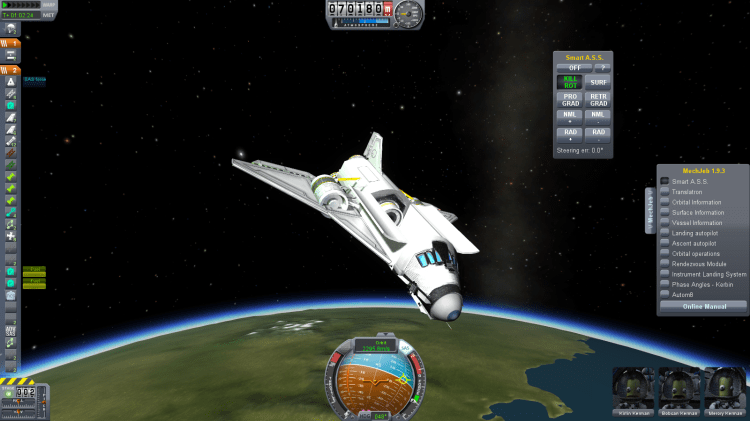An asteroid might have led to the extinction of the dinosaurs, but NASA is gonna make sure the same thing doesn’t happen to the Kerbals.
The National Aeronautics and Space Administration is teaming up with developer Squad to add a new mission to the studio’s spaceship-building simulator Kerbal Space Program. This new addition to the popular indie game will mirror NASA’s own Asteroid Redirect Mission, which is a three-part strategy to locate, land on, and move a space rock by 2022. NASA wants to study asteroids and prove that it can adjust their path if a large one is headed for Earth. It also wants to use Kerbal Space Program to increase the general understanding of science.
Squad and NASA plan to take the stage this weekend at the annual South By Southwest festival in Austin, Texas, to go over the work they’ve done together.
“Kerbal Space Program is about giving gamers the chance to dream big, even if they’re not astrophysicists,” Kerbal Space Program creator Felipe Falanghe said in a statement. “This relationship with NASA, the very beacon of big dreams and imagination, is going to give players a real opportunity to learn about the universe we’re living in. The Asteroid Redirect Mission is going to be one of the rewarding and challenging accomplishments in all of gaming. We can’t wait to see our current and future players take on this mission and perhaps, teach NASA a few tricks along the way.”
Kerbal Space Program has players piecing together rocket ships to land on a moon, to orbit other planets, or to leave the solar system. It features a model based on real physics, and accurately portrays the obstacles that real rocket scientists have to overcome. It is available now for $27. The Asteroid Redirect Mission will require players to master a variety of different astrophysics-related disciplines. The add-on will also introduce a number of new parts to help players achieve their goal.
NASA is hoping that the compelling gameplay of Kerbal Space Program will help draw more attention to the real-world U.S. space program.
“The collaboration with KSP can help drive interest by future explorers in next-generation technology development and deep space exploration,” NASA communications specialist Bob Jacobs said. “Having an element of the experience based in the reality of NASA’s exploration initiatives empower players to manage their own space program while getting valuable insight into the reality of studying asteroids as a next step in getting to Mars.”
Of course, on top of that, NASA really just loves Kerbal Space Program. In November, Falanghe told GamesBeat how NASA team members sought him out during last year’s gigantic Electronic Entertainment Expo video game tradeshow in Los Angeles. They wanted to meet the man that built the game that everyone at NASA was playing.
VentureBeat's mission is to be a digital town square for technical decision-makers to gain knowledge about transformative enterprise technology and transact. Learn More






![Reblog this post [with Zemanta]](http://img.zemanta.com/reblog_e.png?x-id=773f4a20-c95d-4110-a4be-e71bf0d1c939)
